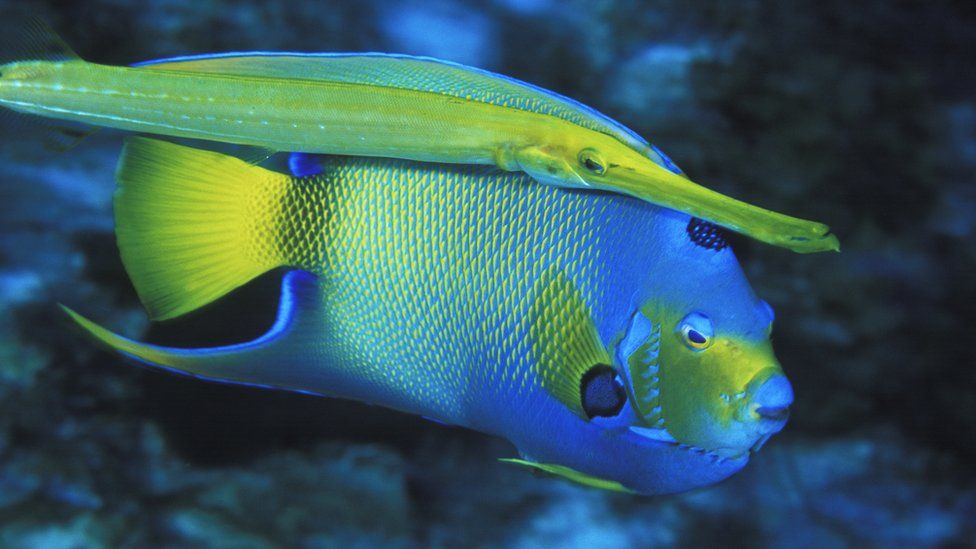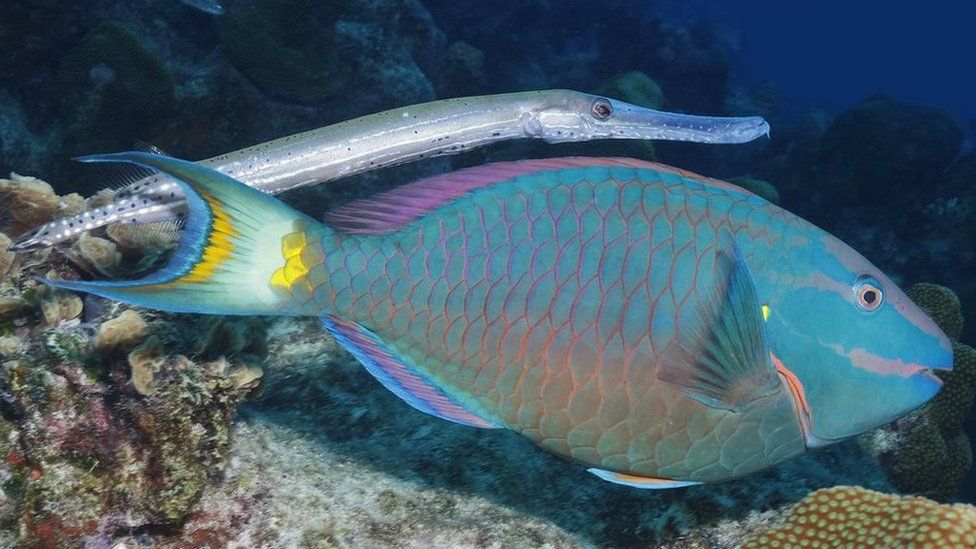In the colorful and diverse world of coral reefs, a remarkable strategy employed by a small tropical fish has captured the attention of scientists. The West Atlantic trumpetfish (Aulostomus maculatus), a diminutive predator dwelling in coral reef ecosystems, has been observed swimming in the shadows of larger, non-predatory fish, like the stoplight parrotfish (Sparisoma viride). However, the purpose behind this behavior has remained a mystery until recently.
Researchers, led by Sam Matchette from the University of Cambridge, sought to unravel the secrets behind the trumpetfish’s unusual hunting tactic. Their findings not only shed light on this intriguing behavior but also have implications for understanding how certain species may adapt in the face of potential coral reef degradation.

The hypothesis was simple: swimming close to parrotfish might allow trumpetfish to approach their prey without alarming them. To test this theory, the team focused on one of the trumpetfish’s common targets, a species of damselfish known as Stegastes partitus. Their experiments took place in the coral reefs off the Caribbean island of Curaçao.
The researchers devised an ingenious setup involving tripods connected by nylon lines, allowing them to maneuver 3D models of dummy fish past real colonies of damselfish. First, they moved a model of a trumpetfish over the damselfish, which promptly fled. Then, a model of a parrotfish was pulled over the damselfish, and they continued their activities without concern. However, when both trumpetfish and parrotfish models were pulled together, simulating the way trumpetfish closely accompany parrotfish, the damselfish reacted by fleeing. This series of experiments was repeated across 36 damselfish colonies at three different locations around the island.

The results strongly suggest that trumpetfish shadow other fish to get closer to their prey. Sam Matchette noted that this is the first known instance of an animal using another creature as camouflage to approach or hide from its prey. This behavior has parallels in human hunting, where hunters often approach birds like ducks by concealing themselves behind horses, giving rise to the term “stalking horses.”







